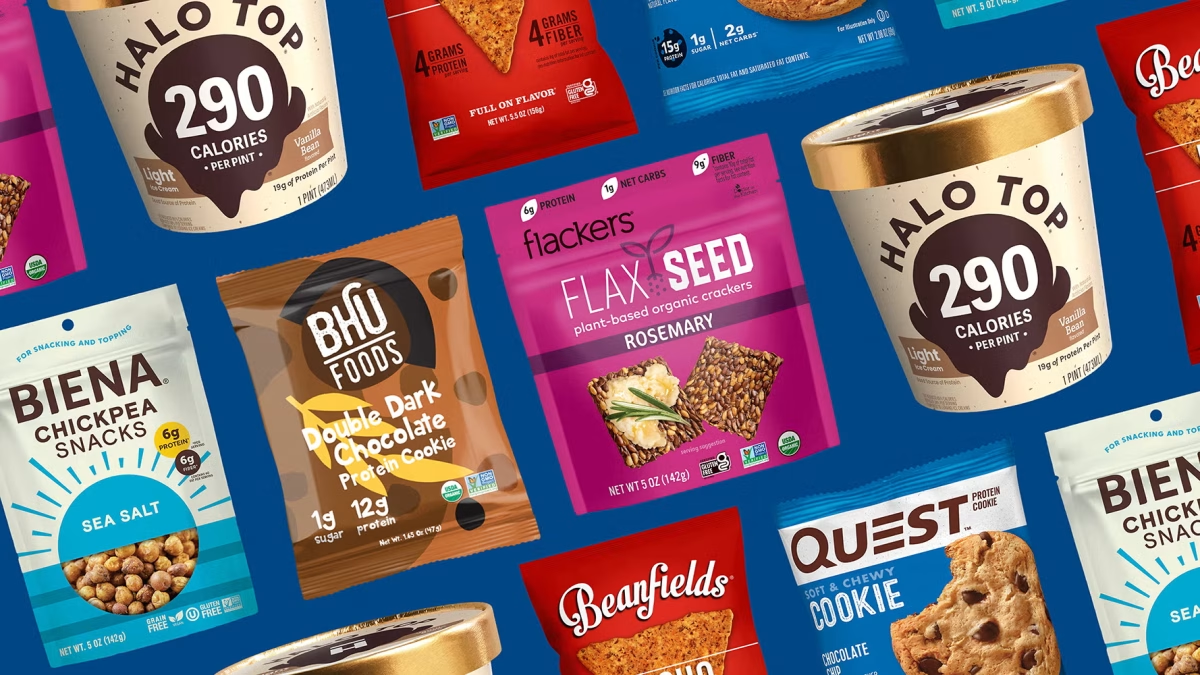Recently, almost every time I go to the store or scroll through recipes online, I’m assaulted by the same word over and over again: protein. Whether it’s high-protein cereals at Target or bagel recipes with cottage cheese on TikTok, every single food item I encounter seems to have its own “high-protein” alternative.
Everywhere I turn, there are new protein bars, cereals, ice creams and even popcorn obsessively advertising their macros, and with that, the potential for a fitter body and lifestyle. For context, “macros” refer to the essential nutrients that our body needs to function, specifically carbohydrates, fats and proteins. Proteins are widely recognized for their importance in muscle growth and recovery, which is why people tend to focus on them.
Consumers truly can’t escape the protein craze. But do these products even deliver on what they promise?
In short, no. While the front of these products’ packaging promises a “healthy snack” packed with protein, their nutritional labels and ingredients often reveal poor macros or less-than-ideal ingredients. As a result, health-conscious consumers are deceived into choosing an alternative that can overpromise on nutritional density or destroy their gut health.
Take, for example, Cheerios. The popular cereal brand recently released a “protein” lineup. All three of their offered flavors proudly advertise eight grams of protein per serving on the box. An uninformed consumer could easily think that the cereal would be a good replacement for eggs or Greek yogurt in the morning. But for most, this product doesn’t offer a substantial amount of protein, as most people require at least 100 grams of it per day. And with the 150 calories and 12 grams of added sugar per serving, the cereal isn’t truly the balanced and “healthy” option that it advertises itself to be.
Instead of relying on products that have processed protein added to them to reach our macro-based goals, we should center our major meals around natural protein sources like Greek yogurt, chicken and seafood to name a few. Focusing on eating whole, high-protein foods can help us reach our ideal macros just as easily as the hyperprocessed protein alternatives, but without the added sugars or other ingredients.
That’s not to say that all protein products over advertise their benefits: products like Barebells protein bars, according to their website, have 200 calories and 20 grams of protein per bar, along with 0 grams of added sugar. These bars could be a great choice for a macro-conscious consumer but the sugar alcohols used to sweeten the bar without added sugar can be incredibly disruptive to gut health. In fact, the packaging includes a small print warning that states “excessive consumption may cause a laxative effect.”
These two products are only two of the thousands of “protein” options now offered by food brands, with the U.S. protein supplement market being valued at 9.88 billion USD in 2024 by Fortune Business Insights.
As consumers and gymgoers, it’s easy to get caught up in the illusion that everything we eat needs to be protein-packed. But truly, everything (including protein) can and should be eaten in moderation- a balanced diet, above all, is key to reaching your macro goals healthily, not a diet rich in processed protein snacks.
However, as someone who regularly goes to the gym and eats to prioritize muscle growth, I often find protein products to be great alternatives to a sweet treat. I can’t pretend that I don’t regularly snack on Barebells or try a new protein powder or bar. It’s just incredibly important to keep in mind that these ultra-processed snacks should be eaten in moderation, as they really don’t deliver on their promises.
We often seem to forget that it’s okay to enjoy a real cookie instead of a cookie-flavored Quest bar. Not every single dessert needs to be baked with protein powder, and your progress won’t be derailed by a special birthday treat. Our lives are incredibly short; sometimes all we need is a piece of normal (not protein) chocolate to get through the day, and that’s okay.



